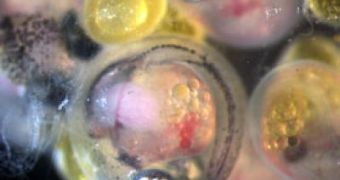There is a tough war between sexes, which does not finish with the egg fertilization: both parents want to control their own the fetus' growth rate, even in the case of the nutrient-supplying mother that has a placenta and gives birth to live offspring. A team has discovered evidence of genetic weaponry and a genetic "arms race" occurring between a mother and her offspring, who uses the growth-promoting paternal genes.
A '90s theory stated that in animals with a placenta, genes from the father and the mother induce different growth rates in the embryo, in a conflict over nutrients. The father may not be there, but he wants a rapid fetal growth, as bigger offspring will be hardiest, but they demand the most of the mother's placental nutrients. But the female "wants" to induce the same growth level for all of her babies, so that she can support her and the offspring from all her matings.
The placenta feeds the developing fetus in the uterus. Most mammals, excluding marsupials (like the kangaroo and the koala) and monotremes (like platypus, that lay eggs), have a placenta. The conflict over nutrients has been proven in placental mammals.
But the new research focuses on non-mammal placental species. "We worked with the fish family Poeciliidae and other families in the order Cyprinodontiformes, which included the poeciliids," said David Reznick, a professor of biology at UC Riveriside and a leading authority in live-bearing fishes.
Most bony fishes are egg-layers, the only exceptions being some families in the Order Cyprinodontiformes, like Poeciliidae, that have evolved a placenta-like structure and give birth to live offspring (the other fishes with placenta are some sharks).
The researchers investigated samples of the IGF2 growth hormone (insulin-like growth factor 2) coming from 50 species of Cyprinodontiformes. The IGF2 gene is encountered in all vertebrates (from fish and people), and is the main fetal development growth hormone.
The IGF2 gene sequences were found to have changed in some species of the Cyprinodontiformes. "In earlier research, we had found that the placenta had evolved independently several times in these fish. In the current research, we found a strong correlation between the evolution of live-bearing and placentation in these fish and the acceleration of the rate of evolution of IGF2 in the fish. This shows that IGF2 plays a vital role in not just mammals, but in fish as well.", said Reznick.
The most important genetic changes were encountered in those species of Cyprinodontiformes that had developed placentas, supporting the theory of the genetic war between the male and female in producing offspring.

 14 DAY TRIAL //
14 DAY TRIAL //